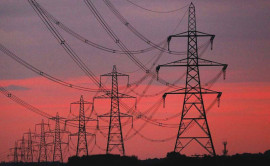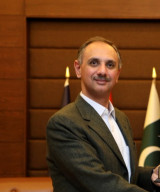
There is some scope in increasing various kinds of efficiencies and reducing various kinds of leakages and losses. Electricity cost and tariff can be brought down by increasing capacity utilisation and thus being able to offer a reduced seasonal tariff.
The electricity cost and tariff are projected to increase further due to two major reasons – rupee depreciation from Rs105 (the exchange rate to which most of the power projects are pegged) to Rs150, the rate assumed by the Central Power Purchasing Agency-Guarantee (CPPA-G) in doing its projections.
There is also an increase in the London Interbank Offered Rate (Libor). The current Libor, as assumed by the CPPA-G, is 3.64% as opposed to 0.5% at which most of the independent power producers’ (IPPs) tariffs have been based.
This means that at Libor plus 4.5%, the interest rate and thus debt servicing cost of the IPPs will increase from 5% to 8.14%.
Energy projects are at varying stages of their debt cycle. To give the reader an example, the current generation tariff for a wind power project is Rs28 per kilowatt-hour (kWh) as opposed to Rs4 per unit for new wind power projects.
The average power purchase price (PPP) for 2019-20 has been projected at Rs12.10 per kWh as opposed to below Rs10 per kWh earlier.
Once expensive nuclear power comes in, the increase will be even more. Thanks to the depreciated power plants and cheaper local gas, the increase may still be controllable.
When we examine the latest cost and energy forecast data for 2019-20 released by the CPPA-G recently, some interesting phenomenon is readily discernable. Although such figures were available earlier also, the monthly cost data this time invites much attention.
Electricity demand (megawatts) and consumption (gigawatt-hours) in winter are much lesser than in summer, reducing capacity utilisation and increasing capacity charges (CPP) and thus the total generation cost (PPP).
For example, the January cost is Rs14.47 per kWh while July cost is Rs9.94. In January, demand is only 16,762MW and in July, the demand is 25,030MW.
There is a temptation to wish and think that if consumption in winter is somehow increased, the electricity cost can come down. We have tried to do this exercise.
If we increase energy utilisation by 21.88%, the total energy cost (PPP) comes down 12.46%. If energy consumption is further increased, the potential for cost reduction further rises.
However, the reverse may not be true, ie, if the price is reduced, demand may not go up in consonance with the cost formulae. It will depend on the consumer propensity to save and many other factors such as market structure, consumer habits, labour conditions, work habits, technology, etc.
Secondly, the winter generation capacity may not be as much as dictated by the market. An obvious factor is the lower hydel generation.
The idea is worth exploring. Prima facie, there appears to be a potential for the application of this possibility. The industry may shift to higher production levels in winter due to lower energy tariff or winter industries may acquire more competitiveness.
Domestic consumers may shift to electrical heating (resistance or inverter ACs) instead of using liquefied petroleum gas (LPG) or natural gas. The gas tariff is increasing?
Competitive energy market
In advanced countries, there is a retail competition regime whereby many suppliers compete to sell electricity or even gas to consumers. At the wholesale level also, there is a share market-type energy exchange where prices are offered and accepted on the basis of supply and demand and thus considerable variations occur in wholesale prices.
However, at the retail level, the consumer tariff (especially the residential one) is kept relatively stable based on the average.
There are dozens of tariff plans that are being offered by energy suppliers in the retail competition regime. However, one can divide those into two types - a fixed tariff for one or two years and variable tariff, which may change monthly.
So, there will be nothing abnormal in having a seasonal tariff that changes twice or four times a year.
In Pakistan, there is already a provision of variable tariff wherein fuel price adjustments are made monthly. Accordingly, the fixed price adjustment can also be made monthly or quarterly.
The government also plans to have a competitive energy market wherein investment and pricing decisions are made by market forces and controversies in IPP prices and investments are done away with. This will reduce the role and liabilities of the government and is also expected to promote efficiency and reduce energy prices.
Easier said than done; existing contracts are a major impediment in the way of bringing new competition rules. There is always a possibility of anti-competitive behaviour.
Simply speaking, there are possibilities of price collusion and investment manipulation as is alleged in the case of sugar and cement. Still, it is said that a bad market may be better than a bad government.
The opportunities for reducing the energy cost and tariff in the short run are limited as the die is cast by the IPP contracts, usually and most expensive. Most damage to the electricity price regime has been done by the so-called upfront tariff.
In the medium to long term, there may be some possibilities - retiring the expensive IPP contracts and introducing cheaper renewable energy sources at reasonable contract terms and preferably through competitive bidding.
With the improvement in general economic conditions and the current account deficit, the exchange rate may assume a reasonable level conducive to the reduction in energy cost and tariff.
Concluding, the National Electric Power Regulatory Authority (Nepra)/CPPA-G may like to examine this opportunity and undertake simulations to come to an optimised and reduced tariff in winter, which will maximise capacity utilisation.
The writer is a former member energy of the Planning Commission
Published in The Express Tribune, October 7th, 2019.
Like Business on Facebook, follow @TribuneBiz on Twitter to stay informed and join in the conversation.






























1714024018-0/ModiLara-(1)1714024018-0-270x192.webp)









COMMENTS (1)
Comments are moderated and generally will be posted if they are on-topic and not abusive.
For more information, please see our Comments FAQ